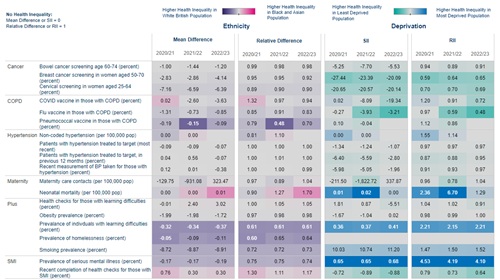The health and care system generates a huge amount of data that can be used to improve patient care and outcomes, while making the most efficient use of resources.
Advanced analytical methods, tools and techniques can support commissioners and providers to improve care planning and delivery by delivering insights, predictions and recommendations from the available data.
Advanced Analytics Unit
Arden & GEM’s Advanced Analytics Unit (AAU) is a team of highly skilled analytical specialists, providing support across all areas of analytics, from data collation through to decision support.
We are part of the NHS, with a committed and passionate team who work hard to better inform the planning and delivery of health and care services through provision of high-quality, tailored analysis.

Team members bring experience from across NHS providers, commissioners, local authority, commercial and academic sectors, covering a diverse skillset. We work collaboratively and flexibly with our customers, adopting an agile development approach.
We support a range of projects, including:
- Technical consultancy, process review and recommendations
- Discrete analytical projects, including evaluation, forecasting, hypothesis investigation and predictive modelling
- Dashboard and tool development and handover
- Longer-term analytical managed service provision
- Capability development and knowledge transfer.
We proactively identify gaps and opportunities for growth, working collaboratively to shape client requirements and to transfer skills across the NHS analytical community.
Our advanced analytics solutions
Our work typically involves a range of capabilities and techniques, with solutions including:

Data science
AAU’s Data Science team focuses on delivering value through automation, modelling and simulation, utilising machine learning approaches to support prioritisation and planning.
We use a wide range of analytical tools, data science methods and machine learning models including:
Supervised learning methods, which train a model on known inputs and output data to predict future outputs, such as:
- Regression – for example, to calculate the risk of an event such as an A&E attendance or a hospital readmission
- Classification – for example, to assign patients to categories such as treatment groups or groups with similar burden of morbidity.
Unsupervised machine learning, which groups objects by similarities or differences, such as:
- Clustering – for example, to understand the similarities and differences of patients attending A&E
- Time series analysis – for example, forecasting the number of patients on hospital waiting lists, accounting for seasonal factors
- Natural Language Processing (NLP) – for example, developing predictive risk models from hospital clinical notes, to help patients and clinicians jointly manage their conditions.
A key application of these techniques is developing case finding tools and predictive models to support clinicians in prioritising patient care. Some examples of projects that we are currently working on include:
- An enhanced chronic obstructive pulmonary disease (COPD) case-finding tool, using machine learning models, to assign individual risk scores to COPD patients, calculate their likelihood of COPD-related exacerbations and estimate the expected time until an exacerbation.
- Using multiple predictive models with clustering techniques to segment high level cohorts into distinct groups who are likely to benefit from social prescribing referrals and interventions.
- Utilising machine and deep learning methods to model and predict known and new risk factors, health outcomes and associated behaviours for noncommunicable (NCD) diseases such as heart disease, cancer and diabetes.

Applied analytics
AAU works with organisations across the health and care sector to provide high quality, practical analysis to inform decision-making, bringing technical expertise across disciplines such as statistics, modelling, health economics, data visualisation and data science.
Through working closely with healthcare systems to understand their challenges, we define problem statements and generate hypotheses, drawing on our own expertise, literature review and stakeholder input to present recommendations. We translate complex analyses into meaningful outputs to deliver insight and support the case for change. We proactively identify areas to add value to support delivery of the Triple Aim.
The types of techniques and approaches that we use include:

Diagnostic analytics – allowing us to explore and explain patterns, and understand variation, using techniques such as regression analyses and hypothesis testing.
Predictive analytics – allowing us to estimate how activity, performance and outcomes may change in the future under different assumptions, using techniques such as time series modelling and Markov chain models.
Prescriptive analytics – allowing us to present recommendations to stakeholders to inform allocative decisions and identify appropriate interventions, using approaches such as impactibility modelling and risk stratification.
Evaluative analytics – allowing us to estimate the impact of interventions or policy changes in order to assess whether they should continue.
Technical consultancy - including process review, metric development and knowledge transfer.

Health inequalities
Health inequalities are the observable differences in health experience, outcomes and access to services between different groups.
Where these are avoidable or unjust, they are known as health inequities and are often caused by barriers such as poverty, isolation or poor access to education. COVID-19 has exacerbated health inequalities, disproportionately impacting many who already faced disadvantage.
Our team can support systems in gaining a clearer understanding of health inequalities for their population through to developing tools to measure the impact of interventions in tackling local priorities over time:
Consultancy support
We support teams with identifying and defining indicators to measure health inequalities, working collaboratively with stakeholders to understand local priorities and suggesting metrics that can be used to identify the key areas to target.
We deliver initial training materials to support baseline understanding of health inequalities and how they can be identified and measured. We work with stakeholders to establish consensus on a concise set of metrics that reflect local priorities, using a scoring matrix to assess relevance, data availability, reliability and ability to lead to actionable insights.
Ongoing measurement
Our in-house developed Health Inequalities dashboard enables stakeholders to identify and monitor health inequalities across their local area, with the ability to drill down to Primary Care Network level. The tool is configurable to local priorities and population cohorts, comprising standard morbidity and mortality indicators, a set of indicators reflecting the five key clinical areas outlined in the Core20PLUS5 framework, plus the ability to incorporate bespoke metrics agreed with local stakeholders.


Segmentation
AAU has created a patient-level segmentation model, SMITH (Segmentation Model Individualised Towards Health), which can be used by health and care systems to better understand their population and plan services accordingly.
SMITH brings together socio-demographic, primary and secondary care data to divide the population into 12 groups, each with common characteristics, healthcare needs and priorities. Health and care systems can use this model to plan interventions or personalised care which target specific segments.
We work with customers to flow and link their primary care data into the SMITH data pipeline, putting in place the appropriate information governance agreements, assigning all members of the population to one of the 12 segments using a clinically validated long term condition matrix.
In addition to generating a rich person-level dataset, SMITH incorporates a visualisation tool that supports ICBs in gaining initial insights into the characteristics and segment profile of their population and understanding changes over time. Our team can use SMITH to undertake applied analysis in a range of areas, including variation analysis, forecasting, outcomes metric development and health equity analysis.
The model has been used extensively in Bedfordshire, Luton and Milton Keynes ICS to better understand the entire population, undertake place-based comparisons and benchmarking, and identify opportunities for improvement.

Training
While SQL is the principal tool used by many analysts to extract and manipulate NHS data, there are other software packages such as Python and R which allow wider functionality, including statistical analyses, machine learning, automation and forecasting.
These tools are open source, so do not require expensive licensing arrangements, and their use is becoming more prevalent across the NHS, yet these packages are still fairly new to many NHS analyst teams.
We have developed training packages for R and Python, tailored specifically for use in a health context, with relevant examples relating to real-world use cases for health and care analysts.
Training sessions are interactive and delivered virtually, with participants expected to code-along to enable practical application of techniques. No prior knowledge of programming is required, however, experience in coding or analytics is likely to make concepts quicker to understand.
Our R training course comprises the following modules: An introduction to R, Data wrangling, Data visualisation and Data import/export.
Our Python training course comprises the following modules: An introduction to Python, Data manipulation and exploration, and Data visualisation and plotting.
Training benefits:
- Confidence in understanding R or Python syntax and writing code
- Upskilling teams and individuals to utilise data science and statistical techniques
- Skills to manipulate and interrogate large datasets
- Automate some of the key day-to-day tasks that are currently carried out in Excel or SQL.
Why AAU?
- We are part of the wider network of analytical expertise within Arden & GEM’s Business Intelligence directorate, fostering a culture of ‘do once and share’ and delivering innovative solutions
- We have the skills, data, technology and partners necessary to be able to support our customers to anticipate and respond to the evolving demands of the health and care system
- We work collaboratively with our customers to deliver tailored solutions
- Our services are delivered by the NHS, for the NHS – so we share your values and put patients before profit.
RELEVANT READING
Find out more about our data and analytics work by accessing the resources below:
CONTACT US
If you'd like to get in touch with the Advanced Analytics Unit, please fill out your details below:









